 | Foodoric and associated companies are chemicals manufacturing companies exporting and supplying Manganese Chloride Tetrahydrate USP ACS Reagent FCC Food Grade, operated in India USA UAE Asia Europe and other countries around the world. The associates have one or more of certifications like c-GMP, ISO-9001, ISO-14001, ISO-22000:2005, FSSC 22000; OHSAS 18001; Kosher and Halal Certified; HACCP, FSSAI and FDA - GMP approval. Buyers are assured of good quality and CIF wholesale and retail price for supplies of our Acetic Acid. |
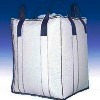
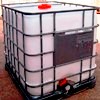
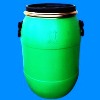
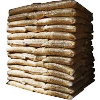
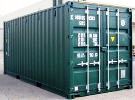
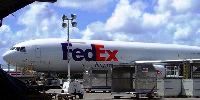
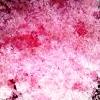
Manganese Chloride Tetrahydrate USP ACS Reagent FCC Food Grade Manufacturers Suppliers
Manganese Chloride
USP ACS Reagent FCC Food Grade

Manganese Chloride CAS Number 13446-34-9, Molecular Formula: MnCl4.4H2O, Molecular Weight: 197.9
Manganese Chloride FCC Grade Specifications
MnCl2 Formula wt, anhydrous 125.84
MnCl2·4H2O Formula wt, tetrahydrate 197.91
CAS: anhydrous [7773-01-5]
CAS: tetrahydrate [13446-34-9]
DESCRIPTION
It occurs as large, irregular, pink, translucent crystals. It is freely soluble in water at room temperature and very soluble in hot water.
REQUIREMENTS
Identification: A 1:20 aqueous solution gives positive tests for Manganese and for Chloride.
Assay: Not less than 98.0% and not more than 102.0% of MnCl2·4H2O.
Insoluble Matter: Not more than 0.005%.
Iron: Not more than 5 mg/kg.
Lead: Not more than 4 mg/kg.
pH of a 5% Solution: Between 4.0 and 6.0.
Substances Not Precipitated by Sulfide: Not more than 0.2%, after ignition.
Sulfate: Not more than 0.005%.
Manganese Chloride Tetrahydrate USP Grade Specifications
MnCl2.4H2O --- 197.90
Manganese (2+) chloride tetrahydrate [CAS 13446-34-9].
Anhydrous 125.84 [CAS 7773-01-5].
Manganese Chloride contains not less than 98.0 percent and not more than 101.0 percent of MnCl2, calculated on the dried basis.
Identification:
A: Yields white, curdy precipitate of silver chloride with silver nitrate TS, which is insoluble in nitric acid. After being washed with water, this precipitate is soluble in a slight excess of 6 N ammonium hydroxide.
B: It meets the requirements of the test for Manganese.
pH: between 3.5 and 6.0, 10 g dissolved in 200 mL of carbon dioxide- and ammonia-free water being used.
Loss on drying: Dry it at 50 for 2 hours, then raise the temperature to 150 for 24 hours: it loses between 36.0% and 38.5% of its weight.
Insoluble matter: Transfer 10 g to a 250-mL beaker, add 150 mL of water, cover the beaker, and heat to boiling. Digest the hot solution on a steam bath for 1 hour, and pass through a tared, fine-porosity filtering crucible. Rinse the beaker with hot water, passing the rinsings through the filter, and finally wash the filter with additional hot water. Dry the filter at 105C: the residue weighs not more than 0.5 mg (0.005%).
Sulfate: A 2.0 g portion shows no more sulfate than corresponds to 0.10 mL of 0.020 N sulfuric acid (0.005%).
Substances not precipitated by ammonium sulfide: Dissolve 2.0 g in about 90 mL of water, add 5 mL of ammonium hydroxide, and warm the solution to about 80. Pass a stream of hydrogen sulfide through the solution for 30 minutes. Dilute with water to 100 mL, mix, and allow the precipitate to settle. Decant the supernatant through a fine-porosity filter, and transfer 50.0 mL to an evaporating dish that previously has been ignited and tared. Evaporate the filtrate to dryness, cool, add 0.5 mL of sulfuric acid, heat gently to remove the excess acid, and ignite at 800 ± 25 for 15 minutes: the weight of the residue is not greater than 2.0 mg (0.2% as sulfate).
Iron: Dissolve 2.0 g in 40 mL of water: the limit is 5 µg per g.
Zinc: Dissolve 1 g in a mixture of 48 mL of water and 2 mL of sulfuric acid, and add, slowly and with constant agitation, 1 mL of potassium ferrocyanide solution (1 in 100): no turbidity is produced within 5 minutes.
Heavy metals: the limit is 5 µg per g.
Manganese Chloride Tetrahydrate ACS
Molecular Formula: MnCl2-4H2O
Molecular Weight: 197.90
CAS Number 13446-34-9
EINECS EC Number: 231-869-6
REQUIREMENTS
Assay: 98.0-101.0% MnCl2-4H2O
pH of a 5% solution: 3.5-6.0 at 25C
MAXIMUM ALLOWABLE
Insoluble matter: 0.005%
Sulfate (SO4): 0.005%
Heavy metals (as Pb): 5 ppm
Iron (Fe): 5 ppm
Calcium (Ca): 0.005%
Magnesium (Mg): 0.005%
Potassium (K): 0.01%
Sodium (Na): 0.05%
Zinc (Zn): 0.005%
TESTS
ASSAY: (By complexometric titration of Mn). Weigh accurately 0.8 g, transfer to a 500-mL beaker, and dissolve in 200 mL of water. Add a few milligrams of ascorbic acid to prevent oxidation. From a burette, add about 30 mL of standard 0.1 M EDTA. Now add 10 mL of pH 10 ammoniacal buffer solution and about 50 mg of Eriochrome Black T indicator mixture. Continue the titration with EDTA to a clear blue color (and disappearance of the last trace of red). One milliliter of 0.1 M EDTA corresponds to 0.01979 g of MnCl2 . 4H2O.
% MnCl2 · 4H2O = (mL × M EDTA × 19.79) / Sample wt (g)
pH OF A 5% SOLUTION: The pH should be 3.5-6.0 at 25C.
INSOLUBLE MATTER: Use 20 g dissolved in 150 mL of water.
SULFATE: Dissolve 10 g in 100 mL of water, add 1 mL of hydrochloric acid, filter, and heat the filtrate to boiling. Add 10 mL of barium chloride reagent solution, digest in a covered beaker on a hot plate (about 100C) for 2 h, and allow to stand overnight. If a precipitate is formed, filter through a fine ash less paper, wash thoroughly, and ignite. Correct for the weight obtained in a complete blank test.
HEAVY METALS: Dissolve 6.0 g in about 20 mL of water, and dilute with water to 30 mL. Use 25 mL to prepare the sample solution, and use the remaining 5.0 mL to prepare the control solution. Adjust the pH with ammonium acetate solution.
IRON. Use 2.0 g.
CALCIUM, MAGNESIUM, POTASSIUM, SODIUM, AND ZINC: (By flame AAS 39).

Manganese Chloride Manufacturers Suppliers:
Foodoric Group of Cos
India, USA, UAE, Europe
e-mail: info@foodoric.com

Copyright Last 13 June, 2025
Manganese Chloride Suppliers, Exporters, Importers, Manufacturers offering good CIF wholesale and retail prices, quality and online information.
A jackal woke up early in the morning and went in to the plains. He looked at his long shadow in the rising morning sun and said to himself, "I must have a camel for my meal today".
He kept moving around till noon and it was getting hot and the jackal was tired. He was also hungry and thirsty. He looked at his small shadow in the mid-day sun. He murmered, "I was only joking about the camel, a mouse will do".